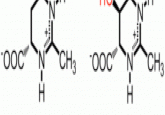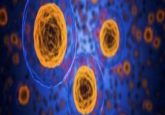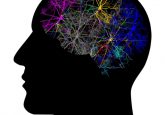Can your genes provide a personalized diet plan?
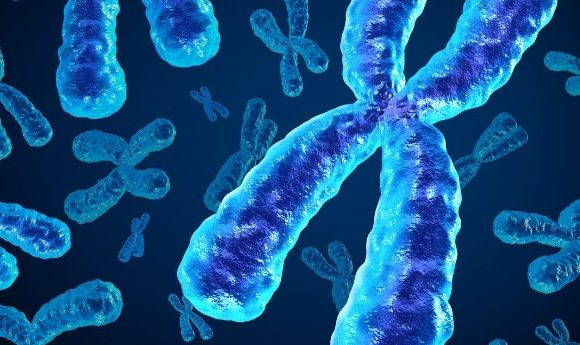
In this interview, José Ordovás from Tufts University (MA, USA), discusses nutrigenetics, the importance of nutrition and his life’s work including his very own “Eureka!” moment.
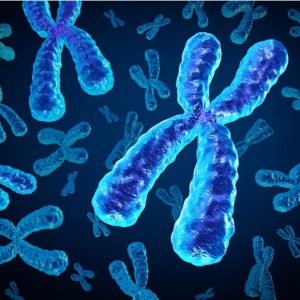
José M. Ordovás is a professor of Nutrition and Genetics at Tufts University (MA, USA) and senior scientist at the USDA-Human Nutrition Research Center on Aging in Boston (MA,USA), where he also is the Director of the Nutrition and Genomics Laboratory. He is a Senior Scientist at IMDEA Alimentacion (Madrid, Spain).
Dr Ordovas was educated at the University of Zaragoza (Spain) where he completed his undergraduate work in chemistry and received his PhD. He did postdoctoral work at MIT (MA, USA) and Harvard (MA, USA).
Dr Ordovas’ research focuses on the genetic/epigenetic factors predisposing to cardiovascular disease and obesity and their interaction with the environment and behavioral factors with emphasis on diet. He has published approximately 800 scientific articles in peer-reviewed journals and has written and edited several books on these related topics.
Throughout his career, Dr Ordovas has received multiple honors for his scientific achievements including the USDA Secretary’s Award, the Danone Foundation Award, and the honorary degree in Medicine by the University of Cordoba (Spain). He is also a Member of the Spanish Royal Academies of Sciences, Medicine, Nutrition, and Pharmacy.
He serves on multiple International editorial, advisory and peer review committees and he is a member of the Comité Científico y Técnico de la Agencia Estatal de Investigación (AEI, Spain.)
10961
It’s a really exciting time for nutrigenomics, but for those who may be unfamiliar with it, please can you provide a brief description of it?
Nutrigenomics falls under the umbrella of personalized nutrition for which there is not a formal definition, resulting in the indiscriminate use of blurred, partially related and overlapping terms such as precision nutrition, nutrigenetics, nutrigenomics, nutritional genomics and tailored nutrition.
We can provide a comprehensive description of personalized nutrition as an approach that utilizes information on the individual to develop specific nutritional advice. We could then narrow down the description of some of the commonly used terms such as nutrigenetics and nutrigenomics.
Nutrigenetics is an aspect of personalized nutrition that studies the different phenotypic responses (i.e. weight, blood pressure, plasma cholesterol or glucose levels) to a specific diet (i.e. low-fat or Mediterranean diets) depending on the genotype of the individual. In this regard, nutrigenetics began with the use of unique single nucleotide polymorphisms (SNPs) to examine their potential interactions with a specific nutrient (e.g. saturated (SAT) fat) to modulate a phenotype (i.e., one of those listed above).
Over the years, that research has evolved to a more comprehensive whole-genome approach – analyzing interactions with dietary patterns to identify the cluster of genetic variants that provide a more comprehensive solution. This is now possible, with the availability of big data analytics supporting the study of multiple factors simultaneously, and using these in aggregate to model predictions of the response to an intervention. These factors include epigenomics, metabolomics and microbiomics, as well as the individual’s environment or exposome.
The capacity to measure “all that matters” is becoming standard modus operandi with the increasing availability of fitness trackers, mobile apps and other devices that enable individuals to continuously monitor numerous health-related factors such as physical activity, sleep and vital signs (blood pressure, heart rate and stress levels). Such information could be used to develop algorithms that, in combination with genetic and other biological information, will provide a sound basis for personalized recommendations. Potentially just as important is the belief that easy access to health-relevant indices provided frequently, and in real time, will be a driver for beneficial and sustained behavior change.
In this notion of personalized nutrition, an individual will obtain data on his/her genotype and several phenotypic characteristics on which the personalized nutrition offering is based and whereby periodic physiological, biochemical and metabolomics analyses and microbiome tests will enable tracking of his/her health metrics in response to dietary and other personalized, behavioral changes in real time using Big Data technologies.
Then, we have the concept of nutrigenomics that has also evolved over time. Earlier, it applied to the use of biochemical and molecular biology approaches to understand how nutrients act at the molecular level (i.e., regulating gene expression). Parallel to the development described above for nutrigenetics, nutrigenomics has evolved to incorporate high-throughput analytical tools (omics) in nutrition research, allowing the examination of how nutrients (or entire dietary patterns) affect the activity of all genes.
Therefore, nowadays, nutrigenomics potentially involves the characterization of all gene products affected by nutrients and their metabolic consequences. Nutrigenetics and nutrigenomics are not independent or isolated concepts. A correct interpretation and actionable application of nutrigenetics require solid nutrigenomics knowledge.
How can our genes determine responses to diet?
Nutrients are essential for life. Therefore, the mechanisms we have in place for the cell to sense nutrient levels (both presence and absence) are highly complex, regulated and integrated, like the pieces of a precision analog watch. The wheels, the balances, the springs, the barrels have to be flawless, or the watch will not work as needed – it could run too fast or too slow – and in some cases will not work at all.
A similar situation happens with the direct or indirect regulation of gene expression by nutrients. Functional genetic variants in the regulatory or coding regions of the genes implicated, one way or another, in nutrient sensing, will impair the needed synchronization. As a result, the response of the gene(s) will run “slow” or “fast” producing deregulation of the mechanisms within the cell.
Going back to the watch, it is also possible that the pieces are perfect but some dirt, humidity or oil gets inside the cage and this could also affect the functioning of the watch. Similarly, appropriate gene regulation can be disrupted without the need to have changes in the gene sequence as a result of epigenetic mechanisms such as aberrant methylation, histone modifications and microRNAs. Therefore, current and future research related to personalized nutrition needs to integrate the study of the genome and the epigenome.
What brought you to the field of nutrigenomics?
Serendipity. During my early postdoctoral experience, I was lucky to be simultaneously exposed to classical nutrition research within the USDA HNRCA at Tufts University (MA, USA) and to the beginnings of modern cardiovascular genetics within the Children’s Hospital at Harvard University (MA, USA). This gave me the opportunity to be exposed to the techniques and approaches of these areas of research and note their strengths and weaknesses and to realize the need to merge both of them in what we know nowadays as nutrigenetics.
My own “Eureka!” moment came when I observed, on the one hand, the dramatic inter-individual heterogeneity in response to our dietary interventions and on the other hand, the inter-individual differences in the expression of a trait (i.e., high plasma cholesterol) in people with the same genotype (i.e., APOE4) and how their combined analyses revealed a gene by diet interaction which constitutes the current basis for personalized nutrition.
Can you tell us about the research happening in your lab right now?
Personalized nutrition is like a puzzle with countless pieces. Our research consists in the identification, characterization, and placement of the pieces. These cannot be done using a single approach but through the combination of genetic epidemiological research in large cohorts and randomized controlled trials; recruiting volunteers carrying specific genetic variants and then subjecting them to different dietary interventions using a crossover design to expose/validate those promising gene by diet interactions that have been identified using genetic epidemiology.
Moreover, the molecular mechanisms need to be identified and this needs incorporating techniques that can interrogate the entire system, such as epigenetics (i.e. methylation, microRNAs), transcriptomics and metabolomics.
Besides incorporating technologies into our personalized nutrition research, we are also adding new dimensions. This means that in the past we have been focusing on what and how much a person should be eating to bring up the best of the genome on him/her, but currently we are adding the time factor to the equation by investigating when meals should be eaten according to an individual’s genome. In other words, we are investigating the personal chronobiology.
What are the key findings of your research?
To point to specific findings in an investigators’ research is like asking parents which of their children they love the most. Every finding is important, and one learns from all of them regardless of the final impact. There are findings that may have more personal impact like the one that I was describing earlier related to being able to see for the first time that the response to changes in dietary fat and cholesterol were dependent on genetic variation at the APOE gene.
In retrospect, that was only a drop in the bucket, but it was the first drop and since then, fortunately, there have been many more drops and some bigger than others. For example, for years we have been pursuing a finding that connects variation in the APOA2 gene with consumption of saturated fat and expression of obesity. A recent key finding consisted of being able to “connect the dots” using a combination of epigenetics, transcriptomics and metabolomics.
The story is not over, but the reassurance to see different pieces coming together is stimulating and drives you to continue in the arduous path of research. Other key findings relate to the discovery of the importance of the CLOCK-related genes in metabolic disorders and the importance of time of day (and maybe time of year) when it comes to personalized dietary recommendations.
I should not forget about another finding that demonstrated two things:
- It is never too late for disease prevention;
- Personalized nutrition not only decreases risk factors for disease but, most importantly, can decrease the expression of the disease itself.
Specifically, a common variant on the TCF7L2 gene can identify those individuals at high risk of diabetes and cardiovascular disease, but, in addition, we were able to demonstrate that when these individuals are placed on a Mediterranean diet they had most of the genetic predisposition removed and a similar number of cardiovascular events than those who did not carry the genetic variants.
Conversely, carriers of the TCF7L2 variant consuming a generally considered cardioprotective diet (low-fat diet) expressed their genetic susceptibility to the disease and had a significantly higher number of cardiovascular events than did their counterparts consuming the Mediterranean diet. The fact that these individuals were between 55 and 80 years old, suggests that it is never too late for disease prevention.
What are the implications of your research for the everyday person?
At present the implications are limited. Whereas it is true that the current nutrigenetic testing that is offered in the market has incorporated results from research that we have been publishing during the last two-plus decades, the capacity of these tests to provide complete and precise solutions/recommendations is only partial. However, by increasing the body of knowledge, the “everyday person” will benefit from truly personalized and complete dietary and behavioral recommendations.
How do you think nutrigenetics will progress in the future?
The progress of personalized nutrition (nutrigenetics) will be facilitated by:
- i) Availability of evidence for efficacy and cost–effectiveness from well-designed intervention studies integrating relevant omics;
- ii) Development of a strong theoretical basis including identification of the most important individual characteristics on which to base personalization (what is important to measure and when);
iii) Development and enactment of a regulatory framework designed to protect the public by giving confidence to health professionals and policy makers. For this to happen we need funding and engagement from all the stakeholders: academics, industry, government, health professionals and the public at large.
What techniques are utilized in your lab and how are they useful?
There was a time in which this question elicited almost exclusively a response based on bench-based techniques (sequencing, mass spectrometry etc.). Nowadays, we need and use all those techniques to carry out not only the different omics (genomics, epigenomics, transcriptomics, metabolomics,) but increasingly, we rely on statistical and informatics-based techniques such as machine learning, vector-supported machines and the like.
How are they useful? The first one generates the data and therefore is essential, but they do it so massively that we need “additional external intelligence” to extract and interpret the information of the BIG DATA.

